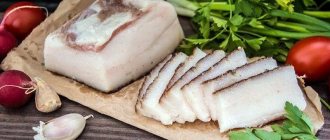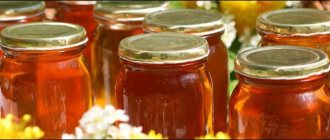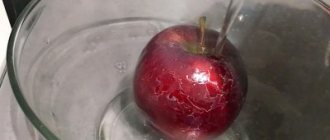Growing a large harvest of apples is a gardener’s pride and joy. But in addition to all the processes that accompany the ripening of fruits, there is another important point - storing apples. I want to save a bountiful harvest for as long as possible so that I can enjoy it until the next season. Gardeners have picked up many tips for storing apples at home.
Apples ready for storage.
What you need to consider to preserve the harvest
There are a number of features on how to preserve apples at home. Of course, the easiest way is to prepare jams and desserts, sweet compotes. But to keep fruits fresh, you need to take into account a number of requirements.
Choosing a variety
The shelf life of fruit directly depends on the variety. Summer varieties are not suitable for this purpose; their taste is lost within a month, in rare cases two. The collected autumn varieties may last a little longer, but not until next year.
Winter varieties are suitable for long-term storage. They can retain their taste and nutritional qualities until next spring, and some even until summer.
Some of the most popular and with remarkable taste are Antonovka, a number of its subspecies, Zhigulevskoe, Renet Simirinko, Jonathan, Bogatyr, Northern Sinap, Idared, Jonathan, Welsey. Among them you can choose the ones that suit your taste, shape and shade.
How to remove apples from a tree correctly
Any apples that are defective, damaged or diseased are not suitable for storage. There have been cases where, due to an oversight, spoiled crops ended up in the storage container, and then the entire crop quickly became unusable.
Apple picking process.
Before you think about how to preserve apples, you need to properly collect them from the branches. To do this, you need to choose a fine day so that the fruit is dry and there is no strong wind to minimize injury.
The procedure for removing apples is as follows:
- You need to wear gloves on your hands so as not to damage the film.
- You need to take the fruit completely in your hand, being careful not to damage the skin.
- Carefully take the apple in your palm and turn it so that the apple and the stem remain in your hand.
- Once the fruit is in your hand, it should not be thrown, but should be carefully lowered and laid down so as not to cause dents or damage.
It is important to start picking those fruits that lie on the lower branches, and gradually move up. This makes collecting as simple and convenient as possible.
Be sure to sort the apples
After the harvest is harvested, you need to move on to the sorting process. But do not do this right away, but leave it to sit for 10-14 days. During this period, all defects will appear.
Apple sorting
Let's move on to sorting:
- damaged ones are separated and left, they are unsuitable for long-term use;
- Representatives of different varieties are deposited separately;
- fruits are also divided by size;
- those with a stalk will last longer.
It is very important not to wash or dry the fruit so as not to damage the waxy layer.
General rules
Whatever storage method we use, we need to follow several rules to ensure that supplies remain fresh for as long as possible.
Varieties suitable for storage
Not all varieties of apples have equally good keeping quality. Summer varieties are stored for about two weeks, autumn varieties for a couple of months, and winter varieties can last until spring. The conditions in which the crop was grown are also of great importance. High temperatures, abundant watering, and excess nitrogen and phosphorus fertilizers during the ripening period of apples reduce their shelf life.
Here are some of the varieties recommended for winter storage:
- Antonovka;
- Pippin;
- Mac;
- Red Delicious;
- Sinap;
- Seruel;
- Verbnoe;
- Banana.
Selection and sorting
Before sorting, apples need to be quarantined. A couple of weeks in a cool room will help identify possible defects. Fruits for storage should be selected taking into account a number of practical recommendations.
- Apples must be of ripeness - not overripe or green.
- Fruits are selected without dents, wormholes or other defects.
- Different varieties need to be stored separately from each other.
- The fruits are selected to be the same size. Large ones spoil faster than small ones.
- There is no need to remove the stem; it keeps the apples longer.
- Fruits should not be washed before storing. The natural coating formed on apples during the ripening process protects them from spoilage and external influences.
Some gardeners advise treating fruits with glycerin, a solution of acetylsalicylic acid or iodinol before storing. Whether this should be done is up to you, dear readers. In the end, our efforts are aimed at preserving the beneficial properties of apples as much as possible and getting all the necessary vitamins and microelements during the winter.
How to pack apples
After the harvest is harvested and sorted, the question becomes: how to store the crop. Each gardener chooses the installation method that he likes. Some are banally simple, and some are intricate. Here's how to properly store apples.
Easy way
According to the name, the method is quite simple to implement. Apples are simply placed in a storage container in several layers. You just need to transfer them with your hands so as not to damage them and lay them out with the stalk facing up.
Packaging paper
Wrapping each apple in paper shows good results. The fruit is wrapped in napkins, newspapers or paper towels and stored with the tails up.
Sprinkling or re-layering
The meaning of this method is that a special, necessarily dry material is laid or poured between the layers. Moreover, the layer should be large so that the fruits do not touch each other.
For this you can use sawdust, dry leaves, onion peels, seed or buckwheat husks, and wood shavings. Vermiculite and perlite are also excellent for these purposes, as they retain temperature well and absorb moisture.
Plastic bags
It is convenient to store fruits in a suspended state in bags. Place 2-3 kg of apples, tie them tightly and hang them. In this case, it is necessary to make several holes so that air can flow well.
Cling film
Using cling film, it is easy to wrap fruits so that they can be preserved for as long as possible. In a cardboard box, which is best suited, you need to place two pieces of film crosswise so that the edges remain free. The apples should be laid out in two layers in a checkerboard pattern, with film wrapped between them. It is important to ensure that the stem of one fruit does not touch another.
We save seedlings
Depending on how long the seedling should be stored, the approach to solving the issue differs.
If a purchased young plant needs to be kept for a couple of weeks, you should make sure that the roots and the lump of earth do not dry out. In this case, the plant itself must be kept in a cool place, without removing the packaging, if present.
In cases where it is necessary to preserve a seedling for a long time, a more serious approach is required, including several stages:
- Unpacking and inspection of roots.
- Root pruning.
- Soil is poured into the container and roots are dug in.
- The earth is moistened.
- The seedling with the container is placed in a cool, dark place until it is planted in open ground.
This article will tell you how to preserve an apple tree seedling before planting in the spring.
Apple storage conditions
Important storage conditions are maintaining high humidity levels and correct temperatures. It is necessary to maintain a distance from other crops so that the taste and aroma of the fruit does not deteriorate.
An example of storing apples.
It is very important to regularly ventilate the room so that ethylene does not stagnate. Its high concentration accelerates the ripening of apples and, accordingly, shortens the shelf life, even if the technology for storing apples is fully observed.
Storage temperature
The normal temperature for storing apples is around zero. Permissible deviations from +1 to -1, a maximum of +4 are not yet critical.
Humidity
Maintaining a high level of humidity is an important requirement for the normal condition of the fruit. The indicator should be between 90% and 95%. If the humidity is higher, the fruit will begin to rot, and if the humidity is lower, it will dry out.
Shelf life of apples
You can tell exactly how long a fruit will last only by knowing the name of the variety. It’s very easy to answer the question: how to keep apples fresh for the winter by selecting suitable varieties. These should be representatives of winter ripening, the fruits of which can remain without loss of quality until the next season. Some representatives, under the right conditions, do not lose quality for up to 8 months.
Variety decides the success of a business
Let's start with choosing a variety. No, we will not give long and tedious descriptions of varieties, we will say as briefly as possible which types of apple varieties will last longer, and which, no matter how hard you try, will either become loose and wadded, or even begin to rot after a week of storage.
For some, we may reveal a secret if we say that all varieties of apples are divided into categories based on keeping quality. So, when choosing a seedling, you need to find out which category of keeping quality this or that specimen belongs to (of course, if you need the fruit to last as long as possible). Typically, the highest keeping quality is observed in late, so-called winter-ripening varieties, in which the harvest begins almost the very last (in central Russia this is mid-October). There is no need to describe apple varieties; just look at the State Register and find winter varieties in the list.
Preserving crops in the ground
This rather old “grandfather’s” method is simple to perform and effective. It will especially appeal to those who do not have cellars at home. The sorted and sorted fruits will be placed in plastic bags, 3-5 kg each.
A storage ditch should be prepared in the fall, after harvesting. The depth of the trench should be about half a meter. It is necessary to lay spruce branches on the bottom so that it protects from the cold and from rodents.
Each package with the harvest must be tied well and leave a long rope. It will need to be left on the surface and tied to a stick that is stuck into the ground.
On the bottom, covered with spruce branches, you need to put bags of apples, leaving a distance of 20-30 cm between them. You can insulate the ditch using a large number of dry shoots. Loot can be obtained by simply pulling the rope.
Paste
Natural marshmallow is one of the ways to prepare apples. This dessert keeps well. You can choose any of the methods:
- in glass jars;
- in linen bags;
- in parchment and containers.
The product is stored under the following conditions:
- temperature about +14°C;
- air humidity – up to 60%.
Before sending for storage, the marshmallow must be dried very thoroughly. Read about ways to store apple marshmallow here.
How to store apples for the winter in the cellar
Very convenient storage of apples in a cellar or cool basement. This is where the most suitable temperature and humidity indicators are. Good ventilation is also helpful here.
Apples in the cellar.
Before placing apples in the cellar, it must be properly prepared. Cobwebs are removed from the walls and debris is left on the floor. It is also important to disinfect. The walls are treated with lime as usual, it is better to add a little copper sulfate to it. For the floor, a solution of vitriol is suitable, preferably copper, at the rate of 500 g per bucket of water. These procedures will help remove any infection.
Adviсe
It is important to follow these recommendations:
- At least once a month it is necessary to inspect the apple stocks on the balcony. Fruits with the slightest signs of rot are immediately removed from the box, as they can cause damage to the entire crop.
- You cannot constantly move boxes of apples from a cool balcony to a warm room and back. A sharp change in ambient air temperature accelerates the process of fruit spoilage.
- Apples should not be stored together with vegetables. Ethylene gas released by sweet fruits significantly reduces the shelf life of root vegetables.
- If you don’t have a thermometer, then one proven method will help you understand that the fruit needs to be removed from the balcony. A jar filled with water is left on the loggia. The signal that the fruit crop needs to be taken to a warm place is the first ice on the surface of the water in the jar.
Storing apples in an apartment
For those living in urban areas, finding a suitable place to store fruit is a little more difficult. Especially if the harvest brought from the dacha is quite abundant. Here are some examples of how to store apples at home.
On the balcony or loggia
An excellent option for storing fruit would be to create a thermal box. Of course, this is possible if the size of the room allows. To create, you only need cardboard and plywood. For insulation you need to use sawdust, polystyrene foam or old fabric.
Two boxes are placed so that one is inside the other. There should be a distance of 15 cm between them, into which the insulation material is placed.
Then everything is simple. Place apples in the box and cover the container. When extreme cold sets in, you can add additional insulation material to the box. Accordingly, as soon as it gets warmer, remove the shelter.
If the balcony is insulated, it is convenient to store them in bags, but it is better to hang them. Therefore, you need to pack a little, 2-3 kg. You also need to make holes in the bags for ventilation.
In the closet, hallway, on the windowsill
If there are no particular placement options, then you can arrange the packages on the windowsill. Then you will have to place a little less fruit in them, up to 2 kg each. Periodically you need to monitor the temperature and ventilate the room.
Packing apples into bags.
Storing apples in the refrigerator
When all the options have already been sorted out, the question arises whether it is possible to store apples in the refrigerator. Although you can’t fit several tens of kilograms in them, 10 should fit. They are stored in bulk in the lower compartment for vegetables and fruits, and in bags on the lower shelves. And yes, they will take up a lot of space.
In the freezer
Despite the opinion that frozen fruits no longer provide the desired benefits, many are breaking the stereotype. It has been proven that freezing preserves 90 percent of all beneficial properties and taste.
The storage method depends on the form in which these semi-finished products will be used. You can core them and freeze them whole if your family likes baked apples. Can be cut into slices, peeled or peeled, for baking, compotes or pies. Some people prefer to freeze applesauce in small portions.
Improving keeping quality
To preserve apples at home throughout the winter, summer residents use folk remedies. To extend the shelf life of fruits, you need:
- dip each apple in an alcohol solution of propolis;
- lubricate with glycerin, petroleum jelly;
- Apply a paraffin or wax coating.
5% salicylic acid and calcium chloride 2% saturation are also used.
Tip of the day
During storage, apples can be affected by fungal rot, so periodically sort the fruits and remove spoiled specimens.
Industrial storage of apples in a warehouse
Those who grow fruit in industrial gardens are always concerned about preserving the entire harvest. Of course, gardeners do not want to lose money, and the question of how to store apples in large quantities is extremely important. In order to preserve a large number of fruits, you need to adhere to the same standard rules:
- temperature maintenance is necessary;
- high level of humidity;
- sterility of the room;
- frequent ventilation;
- in small layers if possible.
Often, after harvesting, special barns or refrigerators are prepared for its preservation, in which all these conditions are met.
Problems and solutions
In the process of preparing apples for long-term storage, various difficulties may arise, many of which are completely solvable. Gardeners may encounter the following problems:
| Problem | Solutions | ||||
| The picked apples have too long tails, which can damage neighboring fruits. | They can be shortened a little, but should not be removed completely. | ||||
| Storage area too dry | Place a jar of water next to the apples | ||||
| Some apples in storage began to spoil | Sort through the entire harvest and remove spoiled fruits | ||||
| Apples placed in a plastic bag in the refrigerator became wet | Dry the fruit and put it in a new bag, in which you make holes for ventilation. | ||||
| Lack of sawdust and shavings for pouring layers of apples | Sawdust can be replaced with buckwheat, onion husks, and husks | ||||
| There is a large harvest of summer and autumn apples that are not stored fresh | Process fruits (make dried fruits, marshmallows, cook compotes, etc.) | ||||
| The natural waxy coating from some of the fruit has been erased | Carry out additional processing using one of the methods, for example, glycerin. Or send the fruits for processing | ||||
| All apples are different - by variety, size | Sorting, separating by variety, and among fruits of the same variety - by size | ||||
| Damage to fruits by diseases such as fruit rot, scab and others while still on the tree | They should not be used for long-term storage. If there are spots or deformed areas, the fruit should be rejected | ||||
| Damage to mold (gray, pink) and other diseases during storage | Affected fruits should be removed from storage | Black or brown spots that increase in size | Why do apples turn black? If the fruits are not too large and collected on time, then the cause of the defect is the high temperature in the vegetable storage | Vitreousness | Increased humidity during ripening, as well as storage errors (temperature violations and poor-quality ventilation) can lead to disruption of fruit formation. |
A number of problems can be avoided if you first send the apples to a six-month “quarantine”, and after two weeks, sort them again, discarding those that are damaged.
How are apple trees treated?
On an industrial scale, there are several more opportunities to preserve the entire harvest as much as possible.
Carbon dioxide treatment
There is a special RGS technology that allows you to quickly reduce the amount of oxygen in the room. There are several possibilities - replacing oxygen with carbon dioxide, reducing ethylene levels, or rapidly reducing the amount of oxygen. So, if in a normal room there is about 28% oxygen, then special treatments allow its percentage to be reduced to 5%. In such conditions, ripening occurs faster, but the fruit does not spoil, and the shelf life also increases.
Methods and technologies for protection against mice and other rodents
To preserve the harvest, it is necessary not only to create appropriate conditions, but also to prevent damage to the harvested apples by rodents.
There are several ways to deal with the problem:
- Using poisoned baits.
The disadvantage of this method is that dead rodents can become a source of infections. In addition, with this scenario, domestic cats can be seriously harmed, even killed. - Laying elderberry branches near containers with fruits.
- Use of repellers.











